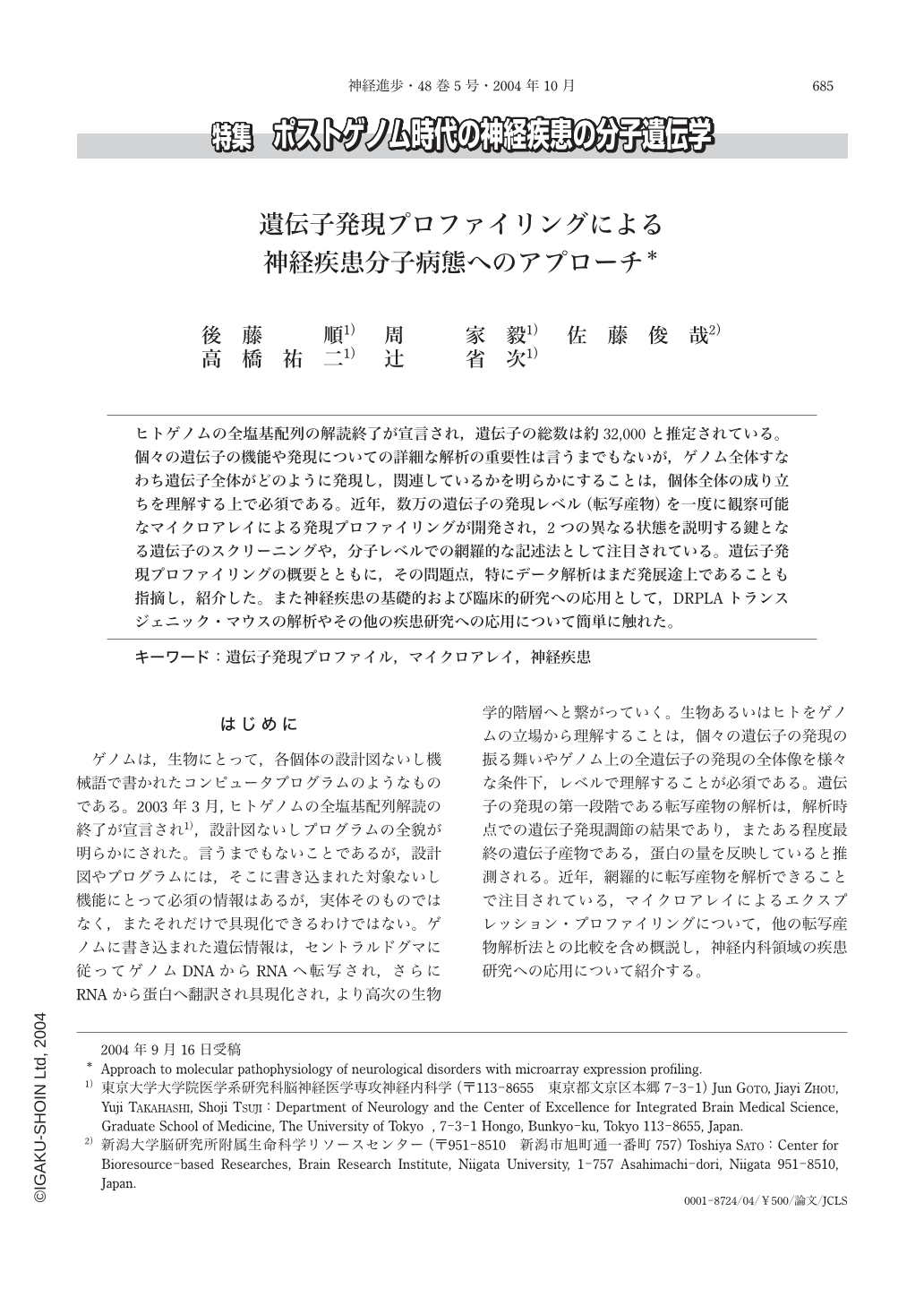Japanese
English
- 有料閲覧
- Abstract 文献概要
- 1ページ目 Look Inside
ヒトゲノムの全塩基配列の解読終了が宣言され,遺伝子の総数は約32,000と推定されている。個々の遺伝子の機能や発現についての詳細な解析の重要性は言うまでもないが,ゲノム全体すなわち遺伝子全体がどのように発現し,関連しているかを明らかにすることは,個体全体の成り立ちを理解する上で必須である。近年,数万の遺伝子の発現レベル(転写産物)を一度に観察可能なマイクロアレイによる発現プロファイリングが開発され,2つの異なる状態を説明する鍵となる遺伝子のスクリーニングや,分子レベルでの網羅的な記述法として注目されている。遺伝子発現プロファイリングの概要とともに,その問題点,特にデータ解析はまだ発展途上であることも指摘し,紹介した。また神経疾患の基礎的および臨床的研究への応用として,DRPLAトランスジェニック・マウスの解析やその他の疾患研究への応用について簡単に触れた。
The accomplishment of sequencing of the human whole genome was declared last year. The human genome has been estimated to contain approximately 32,000genes. It need hardly be said that it is important to analyze function and expression regulation of individual genes thoroughly. Simultaneously, it is also essential to elucidate the global expression and the interactions of the whole gene set in order to understand an individual or human being in a sense of genome. In a recent few years, a powerful method of expression profiling has been developed that enables us to observe expression levels of several tens of thousand genes at once. Here, we presented an overview of microarray expression profiling and also pointed out some problems inherent in the methodology, especially in a viewpoint of data analysis. We also discussed application of this powerful method to basic and clinical researches on neurological disorders, including some examples;our investigation on DRPLA and so on.

Copyright © 2004, Igaku-Shoin Ltd. All rights reserved.


